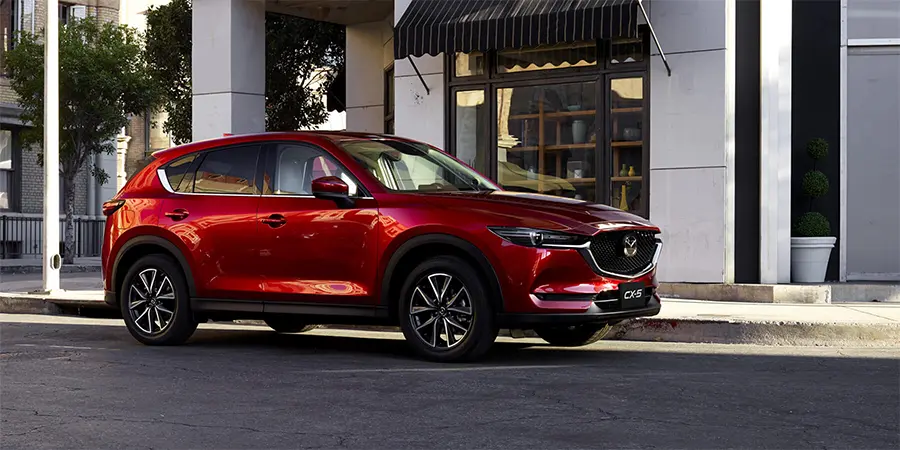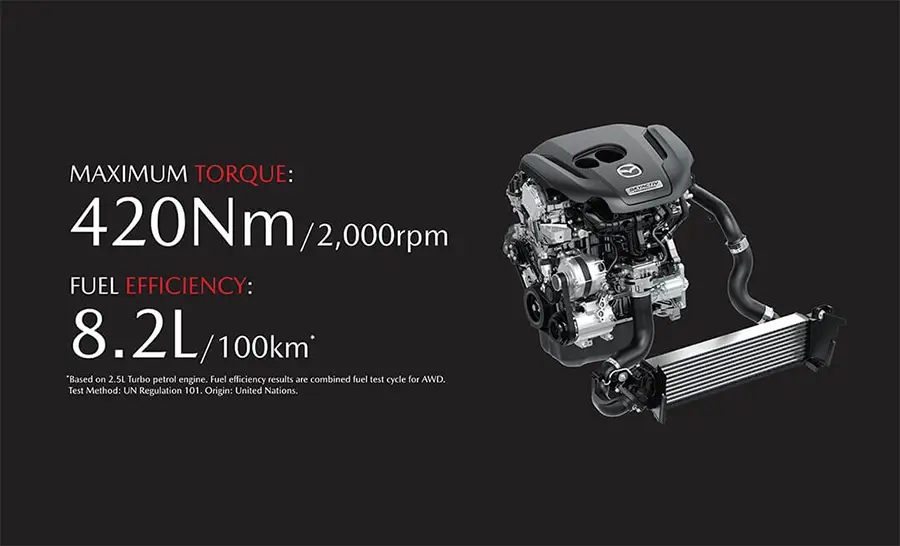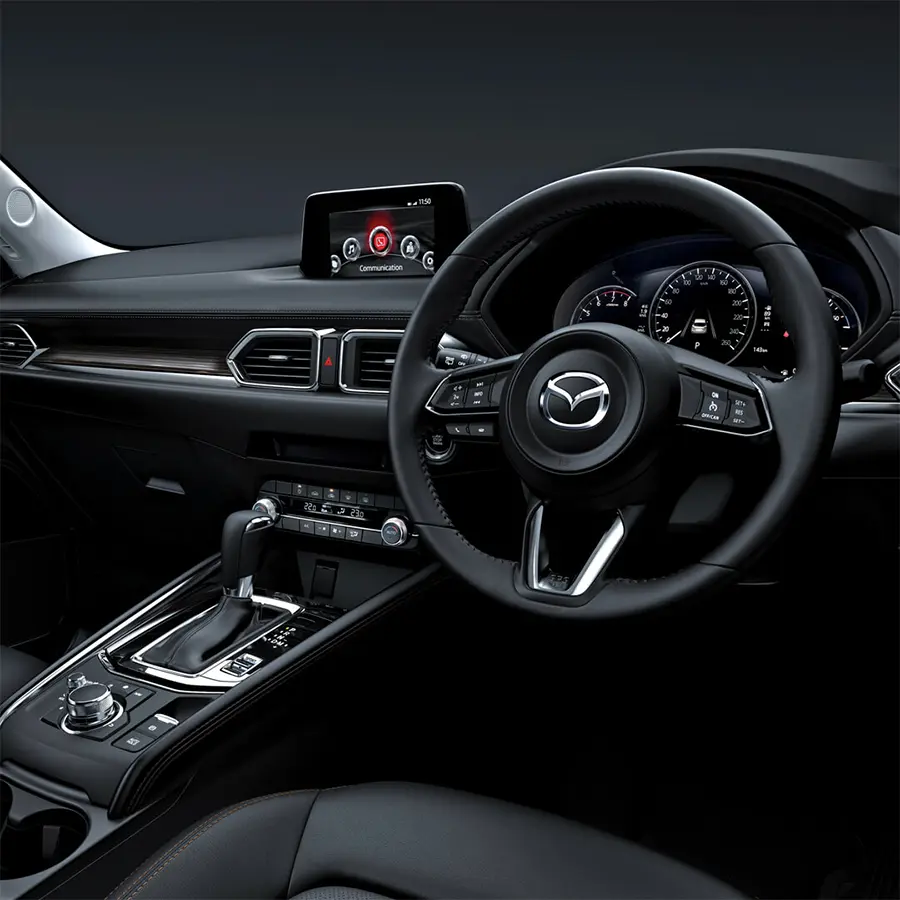Mazda’s top-selling model, the CX5, achieved impressive sales of 365,135 units last year in the USA. Despite speculations about its future due to the introduction of newer models, it seems the CX5 is set to continue with the upcoming third generation. As per Drive’s report, while the official launch date is pending confirmation, Mazda has affirmed the arrival of an updated CX 5 alongside the CX 50 and the larger CX 90 SUVs. Expect the next generation CX 5 to maintain a configuration similar to the current model, featuring a four-cylinder mill and a standard all-wheel drive.
It’s quite probable that the upcoming Mazda CX 5 might incorporate a hybrid powertrain resembling the technology found in the Toyota RAV4 or Corolla Cross. Mazda has a five percent investment from Toyota, and their partnership has resulted in joint ventures such as the Japan-exclusive Mazda 3 hybrid. In the United States, the Mazda CX-50 and Toyota Corolla Cross are manufactured at the Mazda Toyota Manufacturing facility in Huntsville, Alabama. But where is the Mazda CX 5 made? Before we answer this question, let’s first enlighten you about the brand.
Table of Contents
Where is the Mazda CX 5 Made

Curious about where is the Mazda CX-5 made? Explore the intricate process of its manufacturing, from the skilled craftsmanship to the advanced technologies employed in its creation.
Where is Mazda From?
Established on January 30th, 1920, in Hiroshima, Japan, as Toyo Cork Kogyo Co LTD, Mazda later changed its name to Toyo Kogyo Co., Ltd. in 1927. The company sought assistance from Hiroshima business leaders to handle financial difficulties and potential bankruptcy. Initially specializing in machine tools, Toyo Kogyo shifted its focus to automobile manufacturing in 1931, introducing the three-wheeled Mazda-Go auto rickshaw.
Despite unveiling its first passenger car in 1940, Mazda continued as a three-wheeled cart producer until the 1950s. In the 1960s, Mazda’s innovation with Wankel rotary engines gained popularity globally. The 1970s marked partnerships with Ford Motor Company until Mazda regained sole ownership in 2015 after a stock dilution, following successful ventures in Canada and the United States.
Where are Mazda cars made?
Mazda produces its models across various global locations, including Japan, the United States, Thailand, Vietnam, Malaysia, Russia, China, and Mexico. Presently, Japan hosts three manufacturing facilities, with two situated in Hiroshima and the third in Hofu. Formerly, North America housed production sites such as the Auto Alliance International facility in Flat Rock, Michigan, and the assembly plant in Claycomo, Missouri. However, the current setup for North American markets consists of two operational facilities in Huntsville, Alabama, and Salamanca, Guanajuato.
- Mazda3: These vehicles are assembled at the Japanese facility in Hofu, Yamaguchi, Japan. The engine and transmission manufacturing of these models occurs at the Hiroshima plants.
- MX-5 Miata: These models are produced at the Hiroshima facility in the Miyoshi district, which serves as the primary location for manufacturing various high-performance Mazda models.
- Mazda6: Formerly, the production of this model was overseen by two North American facilities jointly owned by Ford. One was in Flat Rock, Michigan, and the other was in Claycomo, Missouri.
- Mazda SUVs and Sedans: Mazda’s Japanese manufacturing plants manage the rest of the product lineup.
The collaboration with Ford allowed both companies to leverage exceptional chassis and designs incorporated into the production of their respective models. However, the Michigan plant ceased Mazda car production in 2012.
Where is the Mazda CX-5 Made?
The production site of the Mazda CX5 is situated at Miyoshi Proving Ground in Miyoshi City, Japan. Despite its mature age, the new CX5 is still a competitive SUV in its segment, offering excellent driving experience and a top-class interior.
Available at an attractive starting price, it features a finely tuned and relatively potent engine, exceptional driving dynamics, and a thoughtfully crafted interior. Problems with the CX5 are scarce, especially considering it hasn’t undergone a significant update in almost ten years.
Is the 2024 Mazda CX-5 worth buying?
Consider placing the CX-5 at the forefront of your considerations, particularly if you desire an SUV with added power while maintaining practicality. However, alternative choices that could be more suitable based on individual preferences exist. The Hyundai Tucson competes strongly for a leading position, mainly due to its luxurious and feature-rich interior. Emphasizing family transport over exhilarating rides, the Tucson offers a different but desirable standpoint. The Subaru Forester might be a preferable option for those prioritizing cargo hauling, slightly outperforming the others in fuel efficiency without a significant margin.
What’s New in the 2024 CX 5?
Similar to its introduction in the CX-30 crossover and 3 sedan and hatchback, Mazda introduces the Carbon Turbo variant to the CX-5 lineup for the 2024 model year. It is identifiable by its distinctive appearance featuring Zircon Sand paint and dark accents on elements like wheels and mirror caps. The Carbon Turbo editions are equipped with the optional 256-hp turbocharged 2.5-liter inline-four engine and all-wheel drive.
We find that the Turbo Premium edition perfectly embodies the essence of the CX-5. With the enhanced 256-hp turbocharged engine, its agility aligns seamlessly with its dynamic handling. The exterior exudes a tasteful sportiness, highlighted by specific gloss-black details. Inside, the sporty theme continues with red accents and stitching, complementing the overall aesthetic.
Powertrain
The 2024 CX-5 is equipped with a standard four-cylinder engine producing 187 horsepower, paired with a six-speed automatic transmission and all-wheel drive. While the engine demonstrates vitality, its enthusiasm diminishes during highway speeds, posing challenges for passing.
Opting for higher trims provides an enhanced turbo-four mill delivering 227 horsepower and 310 pound-feet of torque using regular gasoline or 256 horsepower and 320 pound-feet of torque with premium fuel.

Mazda claims that the standard powertrain boasts a zero-to-60-mph acceleration time of approximately 8.9 seconds. Opting for the turbocharged four-cylinder reduces this time to 7.3 seconds.
Using the default engine, the 2024 CX-5 achieves 26 miles per gallon in urban settings and 31 miles per gallon on the open road. Transitioning to the turbo-four results in modifying these ratings to 22/27 mpg for city and highway driving, respectively.
The CX-5 stands out as an exemplary blend of enjoyment and functionality in a category characterized by somewhat subdued driving characteristics. It exhibits finely tuned maneuverability, precise steering, and a comfortable, well-regulated ride. The vehicle navigates corners exceptionally, maintaining stability across diverse conditions. Few, if any, rivals can rival the caliber of performance offered by the CX-5.
Interior
Awaken within the higher-end CX-5 editions, and you might feel that you are in an Audi or a Mercedes. Superior materials and an exquisite arrangement contribute to an elevated ambiance. The floor-mounted accelerator pedal surpasses its more prevalent counterpart suspended above, the expertly crafted steering wheel aligns directly with the driver without any slight tilt, and all front-seat armrests share an even height for utmost comfort.
Small compromises accompany this compact SUV: the CX-5 accommodated a mere nine carry-on bags behind its rear seats during C&D assessments. Nevertheless, the storage area boasts a perfectly level loading surface. The cabin also hosts various concealed spaces to stow smartphones and miscellaneous items. Notably, the central compartment includes a deep tray at the forefront and a practical bin featuring a detachable shelf.

Each version features a 10.3-inch entertainment screen controlled mainly via a rotary device and volume dial located on the central console. The system also responds to vocal instructions and buttons on the steering wheel. Universal inclusion of Apple CarPlay and Android Auto is maintained. Mazda Connected Services, inclusive of smartphone app-enabled remote vehicle control and a subscription-dependent Wi-Fi hotspot, is a standard offering for the CX-5.
How Mazda Manufactures the CX 5?
Mazda’s Monotsukuri innovation is the essence of its production ethos, encapsulating the art of making things with a profound commitment to quality, performance, and efficiency. This philosophy permeates every aspect of their craftsmanship and reflects a continuous pursuit of improvement. The company employs a fusion of manual labor, robots, and computer-controlled production lines to meticulously craft each car component in-house meticulously, ensuring careful attention to detail and stringent quality control.
Modern technologies, including laser cutting machines, robotic arms, 3D printers, and automated assembly machines, contribute to an exceptionally efficient manufacturing process. Mazda’s unwavering dedication to top-notch products and exemplary customer service is epitomized in “The 100-1=0” promise, vowing for zero defects in design, production, and delivery.
This, combined with the Monotsukuri approach, guarantees customers consistently receive Mazda’s best-quality vehicles. From design to completion, Mazda takes pride in creating reliable, enjoyable vehicles, putting safety and satisfaction at the forefront of their Monotsukuri innovation.
What Technology Does Mazda Employ in Developing CX 5?
Mazda stands out for its integration of cutting-edge technologies, notably the Skyactiv Technology Suite, featuring advancements like direct injection engines, lightweight chassis, and efficient transmissions. These innovations result in vehicles that are not only lighter but also more powerful and fuel-efficient.
Moreover, Smart Mapping Technologies enhance control during acceleration and braking on diverse surfaces, ensuring a secure and enjoyable driving experience. Mazda’s dedication extends to material science, employing components that are 30 percent lighter and 15 percent stronger than the industry average. The incorporation of advanced robotics, 3D printing, and laser cutting ensures precision in manufacturing. This commitment to innovation positions Mazda as a formidable player in the automotive industry, producing reliable SUVs, hatchbacks, and sedans with a focus on quality, excellence, and a willingness to explore new possibilities.
Where is the Mazda CX 5 Made – FAQs
Where Is Mazda Manufactured?
Does Mazda Make Cars In the USA?
After the Michigan facility’s closure, uncertainty surrounded Mazda’s future production in the United States. Nevertheless, the brand persisted. Mazda now has one plant that makes Mazda3 sedans in Salamanca, Mexico, for the North American market and constructed another plant in Huntsville, Alabama.
Did Ford develop Mazda?
Is the Mazda CX-5 a reliable SUV?
2023 Mazda CX-5:
Overall: 83/100 (Great)
Quality & Reliability: 82/100 (Great)
Driving Experience: 80/100 (Average)
Resale: 84/100 (Great)
Dealership Experience: 88/100 (Great)
2024 Mazda CX-5:
Overall: 83/100 (Great)
Quality & Reliability: 82/100 (Great)
Driving Experience: 80/100 (Average)
Resale: 84/100 (Great)
Dealership Experience: 88/100 (Great)
Evidently, both the 2023 and 2024 Mazda CX-5 secured an overall score of 83/100 (Great) from J.D. Power. Furthermore, they mirror identical ratings across the four subcategories: Quality & Reliability, Driving Experience, Resale, and Dealership Experience.
Therefore, for consumers seeking a trustworthy, enjoyable-to-drive, and comprehensively proficient SUV, both the 2023 and 2024 Mazda CX-5 prove to be commendable selections.












